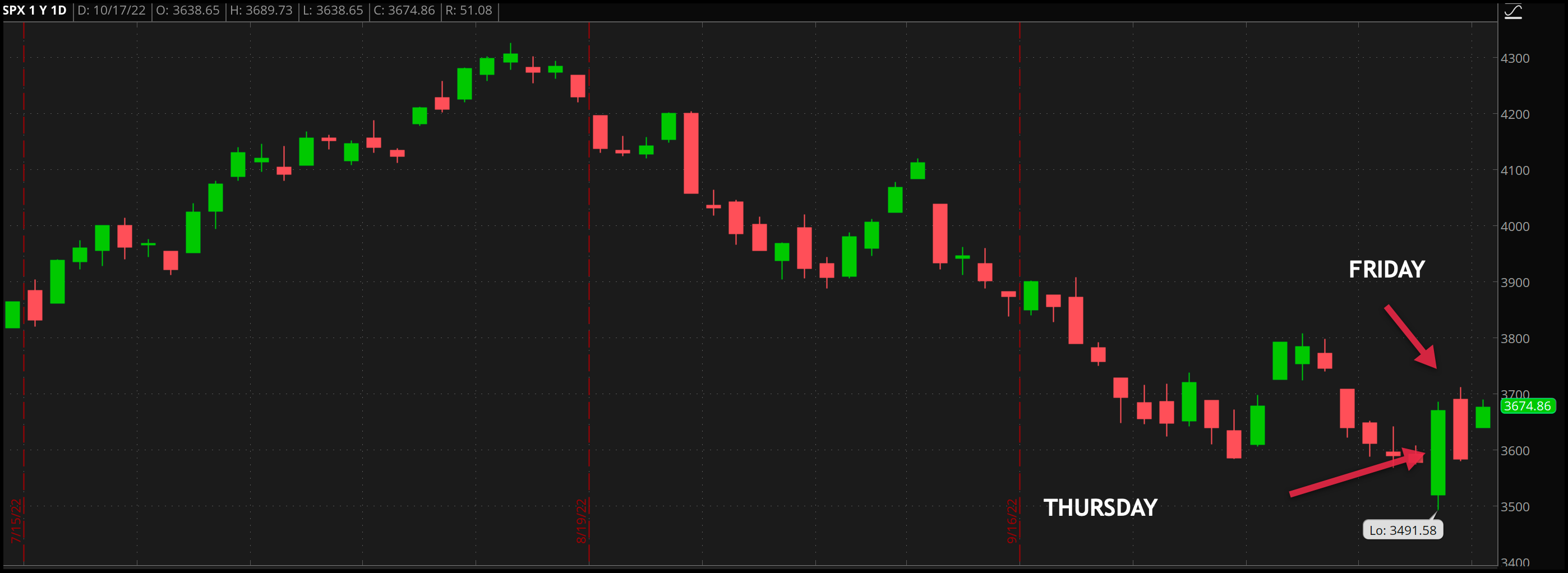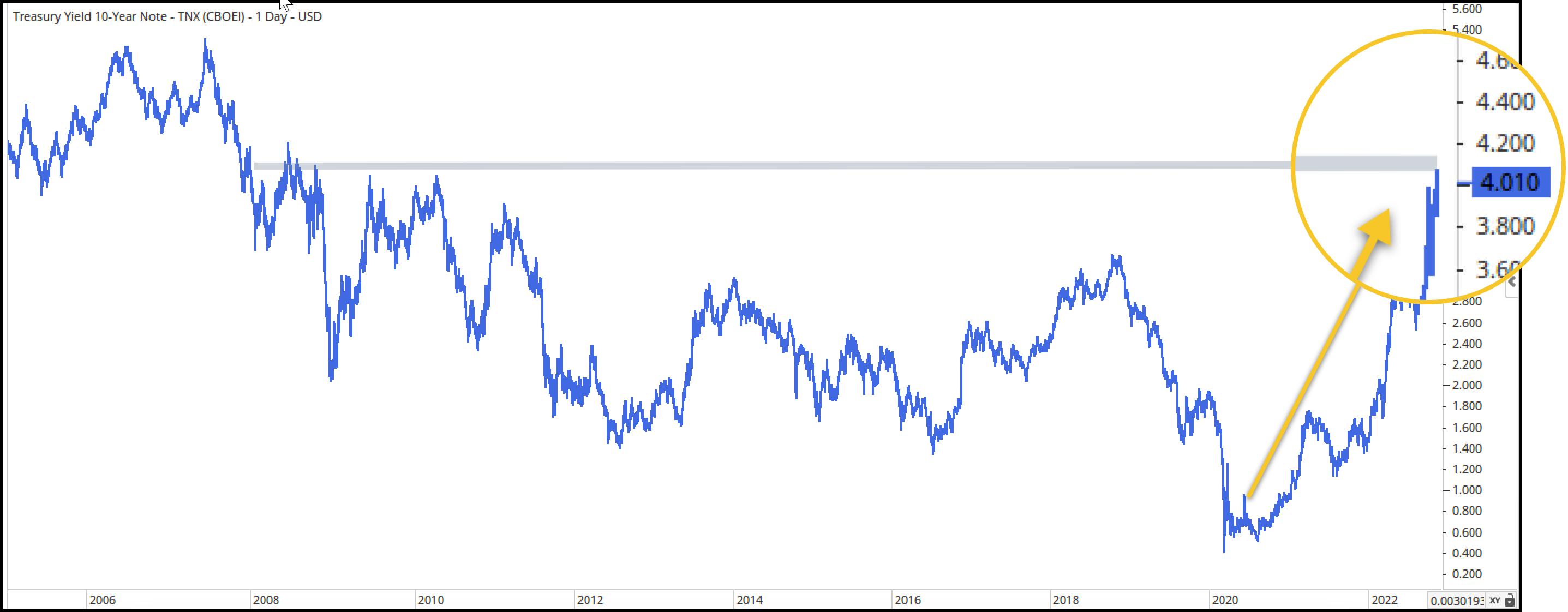Related Blogs
October 17, 2022 | Avalon Team
Following last Thursday’s very impressive upside move, investors were looking for confirmation with some follow-through on Friday.
Unfortunately, that never happened…
All the excitement and talk of engulfing patterns and upside reversals were all for naught, as stocks did what they have done many times throughout the bear of 2022…
They sold off.
Inflation data came in higher than expected with core inflation coming in for September at 6.6%.
For anyone keeping score, that’s a 40-year high.
Friday’s price action was partly the reality of Thursday’s inflation data setting in and what the data likely means…
A more aggressive Fed with more tightening, plus higher rates for longer.
It’s been a very consistent theme throughout 2022.
In 2022, 10-Year Treasuries managed to do something they haven’t done in decades: They broke above a long-term downtrend. The 10-Year Yield bounced off that downtrend line in 2018 (the last time global equities peaked), but never broke out above it.
This time was different. This time yields blew right past a 30-Year down trendline.
The important message in all of this is that higher rates are going to make it very difficult for stocks to stage a meaningful comeback.
And rates don’t look as though they are abating anytime soon.
10-Year Yields are now testing 4.00% for the first time in more than a decade. Again, to make this abundantly clear, that move will do nothing to help stock or bond prices.
Rising bond yields lead to higher mortgage rates and mortgage rates are now at their highest level in 20 years.
Higher mortgage rates hurt the housing market and home buildings. That 1-2 punch can make the economy weak in the knees.
Here’s the Homebuilders ETF (ITB). ITB is off its June lows of -41.52%, but still down in excess of 35% this year.
That makes homebuilders one of the weaker industry groups of the year.
This ongoing underperformance can be attributed to rising mortgage rates closely tied to the upward trend in bond yields. Mortgage rates have more than doubled this year.
Take a look at the chart below, the price of ITB declines as the yield in the 10-Year moves higher.
It’s a classic inverse relationship. Since November of 2021, homebuilders have moved lower as yields have moved higher.
This is terrible news for the housing industry and yet another sign of weakening in the U.S. economy.
Housing is an important driver for our economy, so if homebuilders and housing sales continue to struggle, so will the economy.
And here’s the challenge – the Fed intends to continue raising rates, even if they break something…
Let’s just hope it’s not housing.
If you have any questions or have been considering hiring an advisor, then schedule a free consultation with one of our advisors today. There’s no risk or obligation—let's just talk.
Tags

Free Guide: How to Find the Best Advisor for You
Get our absolutely free guide that covers different types of advisory services you'll encounter, differences between RIAs and broker-dealers, questions you’ll want to ask when interviewing advisors, and data any good financial advisor should know about you and your portfolio.






